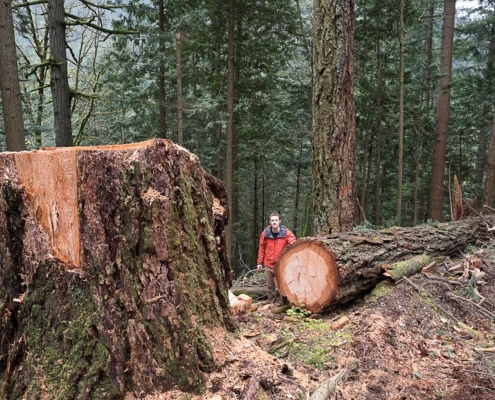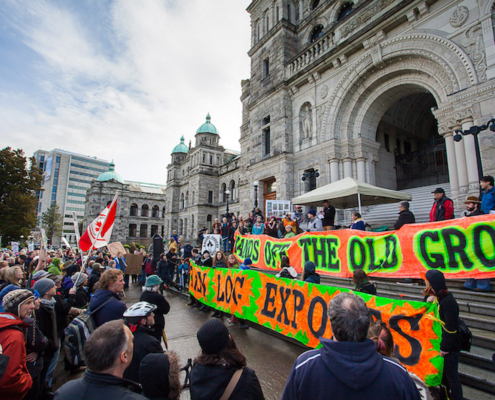
Logging Battle Looms as New Road is Pushed into one of Greater Vancouver’s last Lowland Old-Growth Forests – Echo Lake east of Mission
For Immediate Release
Conservationists and local landowners are reacting with alarm as a new logging road by C&H Forest Products has progressed over a kilometer into the contentious old-growth and second-growth forests north of Echo Lake as a precursor to logging three planned cutblocks there.
Echo Lake includes some of the last unprotected lowland old-growth forests in the Lower Mainland. It is renowned as the world’s largest night-roosting site for bald eagles, with hundreds of eagles roosting in the old-growth trees around the lake on some nights during the fall salmon run, and is home to much wildlife and several species at risk. The area is also part of a Community Drinking Watershed for local residents and is in the traditional, unceded territory of the Sts’ailes First Nation band, who run the Sasquatch EcoLodge and whose members run eagle watching tours nearby.
See a recent drone video taken at Echo Lake: www.youtube.com/watch?v=yfLbzncf9Us
And the original campaign video at: https://www.youtube.com/watch?v=HPstV14oZ6s
Land of the giants: A wet and wild trip to Port Renfrew
Check out this major travel feature in the Times Colonist newspaper about visiting Avatar Grove! The article highlights how the Ancient Forest Alliance's campaign to protect old-growth forests has become a major economic driver for Port Renfrew, which has now billed itself as the Tall Trees Capital of Canada!
See the article from the Times Colonist: https://www.timescolonist.com/life/travel/land-of-the-giants-a-wet-and-wild-trip-to-port-renfrew-1.16451897

Sustainable Forestry Rally Today in Victoria
TODAY, Wednesday, April 12
12:00 noon
Legislative Buildings, Victoria
